Start to Finish: an illustrator shares his work.
Posted by Remya Padmadas on March 03, 2016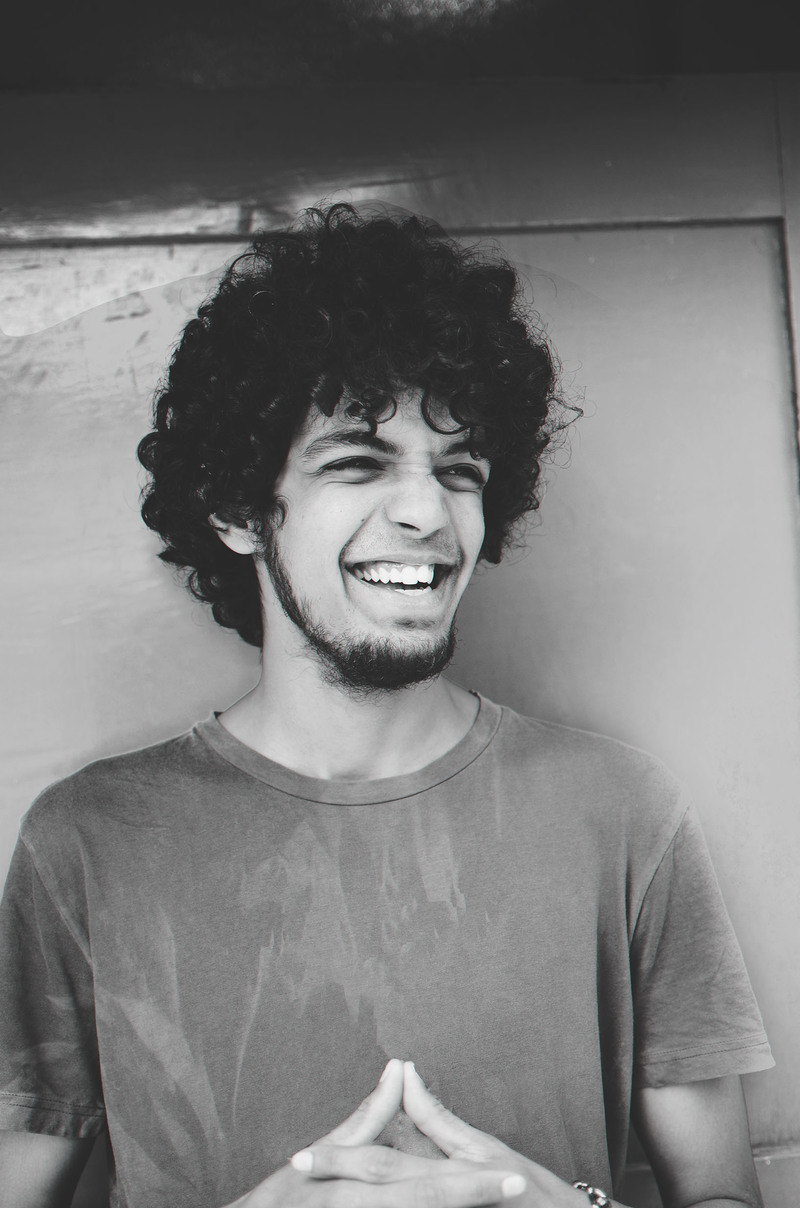
Vishnu M Nair is a visual artist based out of Delhi. He creates contemplative, surreal and humorous narratives in his artworks in many styles and mediums.
'How Far is Far' is a story about scale and comparison, starting small and ending really really large.
The scale of it all really excited me. Below is how I went about planning and illustrating for page 2 of the book i.e 10 m - the second step of the ladder.
Step 1/Layout

Since the imagery of the book was so rich and quirky I chose not to tweak it.
"A three storey building or a mango tree is roughly 10 metres high. A cricket pitch is about twice that length."
I drew the above description out. It would be so strange to see such a visual - so I drew some dumbfounded characters around it.
Step 2/Pencils
A few years ago I learned this neat trick for colouring on photoshop and I planned to use the same method(which you will see later).
I drew out the scene in more detail in pencil - adding more characters and textures - making it believable.Dish antennas, annoying pigeons and a kaamwali bai shooing them away, an ignorant uncle and two boys who's game had just been ruined by this lesson. Adding my own tinier stories into the bigger one is always fun.

Step 3/Colour
I scanned the image into photoshop and cleaned it up a bit first - I also added the ladder from another image into this one.
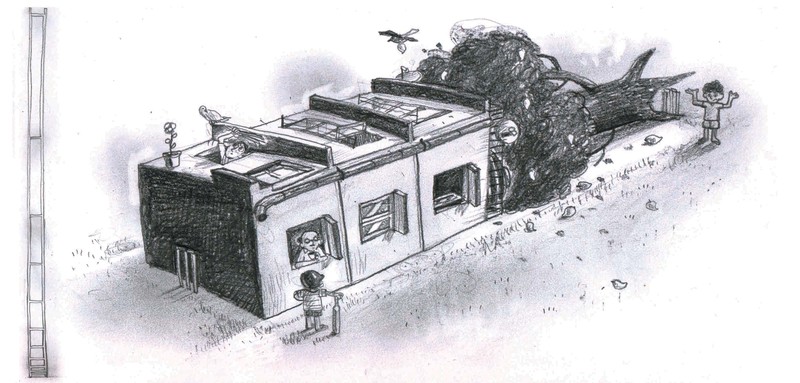
Then I masked out parts like 'ground','tree' 'mangoes' etc in different layers and coloured them in one by one using a gradient map.
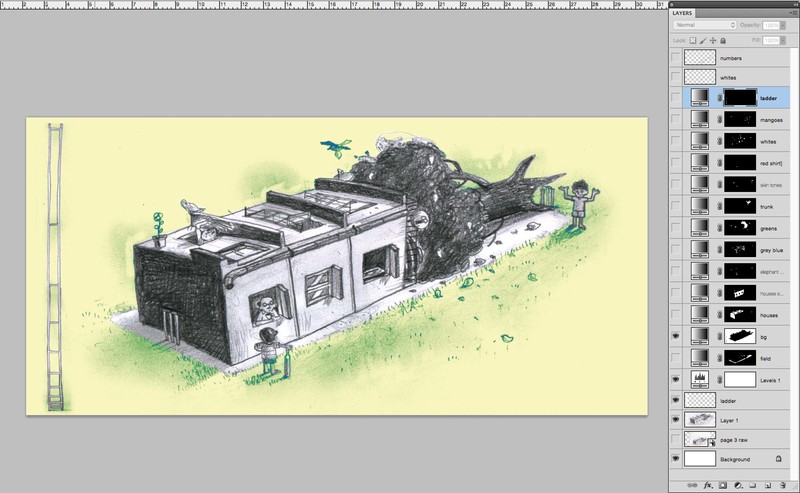
Patient work... but slowly, layer by layer I saw the final image unravel.
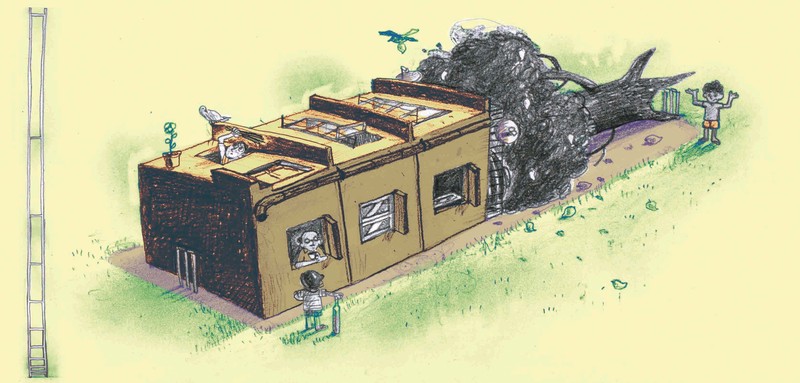
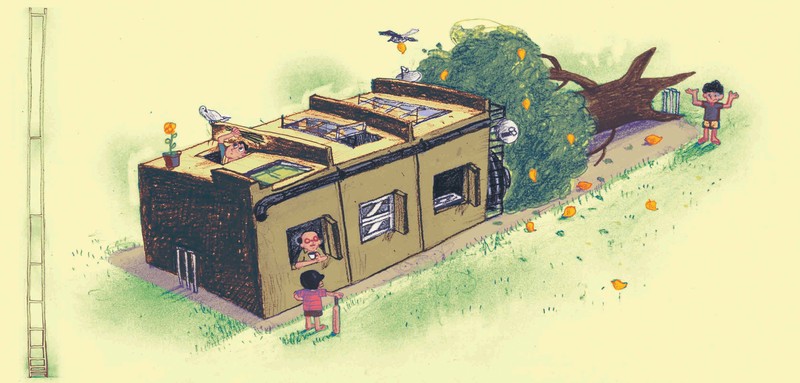

Step4 / Lines and numbers
And finally I added lines and numbers to the artwork to complete it.

Voila!
comments (2)New cities, new communities
Posted by Khyati Datt on December 14, 2018The excitement on the day of any StoryWeaver workshop is often mixed with some nervousness. We meet so many new people from different organisations and always want them to share the excitement we feel about books in classrooms! We wonder if the participants would connect with what we have to say and how they will react. This nervousness gets magnified when the workshop is in an all new city.
Thankfully, our wonderful community never disappoints :) Here’s an account of our last two workshops in the beautiful cities of Jaipur and Hyderabad.
We were in Jaipur during the first week of October to host a StoryWeaver workshop with educators and resource leads of various education organisations. The workshop was our first in the city and was organised with the support of Jawahar Kala Kendra (JKK). They gave us access to their stunning centre and their library -- forming the perfect venue for a workshop on the importance of reading.
We had representatives from 18 organisations across Rajasthan attending the workshop, including UNICEF, Educate Girls, OELP, Doosa Dashak and GoodWeave India. It was wonderful to host participants who had travelled from as far as Jodhpur and Bikaner. As the session progressed, we deep dived into the intriguing world of stories and explored how stories open a child’s eyes to a world filled with joy and learning.
The participants tried their hand at StoryWeaver and chose themes that they found most interesting and explored the platform for stories around them.
One of the most lively discussions was around how different kinds of books can be used with children across various age groups. One participant raised a pertinent point about the need for books in tough subjects like bullying, migration, and hunger. They also enjoyed putting on their writer’s hats and created some lovely stories on the platform.
At the end of the workshop, one of the teachers, who had come from faraway Jodhpur, told us that this was the first workshop she and her colleagues had ever attended outside their centres. This statement demonstrated the enormous responsibility that rests on us - to ensure our workshops stay relevant and productive for our teachers and educators who travel great distances putting their work and home on hold to attend our workshops.
After our first StoryWeaver workshop in Jaipur, we organised our next in the familiar city of Hyderabad. With the support of Dr. Reddy’s Foundation, the workshop saw participants from various organisations like AIF, Youth4Jobs and Youngistaan Foundation.
To celebrate the diversity of languages we have, we had a resource person, Haripriya, help us conduct some parts of the workshop in Telugu. Haripriya runs a gorgeous children’s library in Hyderabad and was a participant in our last Hyderabad workshop. Her presence not only encouraged participants to share their thoughts in Telugu, she also helped us showcase our best Telugu books.
“I thoroughly enjoyed facilitating the workshop in my mother tongue, Telugu. I had a memorable time sharing and learning from educators from different organisations who came together to understand how best they can make use of the platform in their classrooms. Together we read, created, translated books in English, Hindi and Telugu,” she remarked after the workshop.
Our team and the participants agreed that the lunch organised by Dr. Reddy’s Foundation was one of the most delicious meals we had had in a long time. Maddirala Sai Praveen from Azim Premji Foundation, a participant who has experience working with young children in anganwadi centres, volunteered to conduct an energiser post the hearty meal. That got all of us all laughing! The youngest participant of the workshop was the eight year-old daughter of a teacher in attendance and we have to say she was the most energetic of the lot!
As the year comes to a close, we would like to thank all our wonderful participants who make these workshops an amazing learning experience for us. We are also grateful to our new and potential partners, and friends of Pratham Books like Jawahar Kala Kendra and Dr. Reddy’s Foundation for their constant support.
Here is wishing our readers a Happy New ‘Reading’ Year for 2019.
If you are interested in hosting a similar workshop for your organisation, drop us an email on [email protected]
Be the first to comment.StoryWeaver Spotlight: K. Suresh
Posted by Remya Padmadas on June 25, 2019K. Suresh likes to be known as a translator and has several books published for adults as well as children. He is one of the founders of Manchi Pustakam, a Trust for publishing and distributing children's books in Telugu. The organisation has more than 200 titles published by it and distributes an equal number of select books by other publishers. His emphasis is on books that create interest in and love for books among children. He feels that there is a great need for graded books that help children to increase their reading capacities. He has translated many stories to Telugu for Pratham Books including 'The Cat in the Ghat!' and 'What If?'. You can read his stories Mouse in the House and Lost and Found on StoryWeaver.
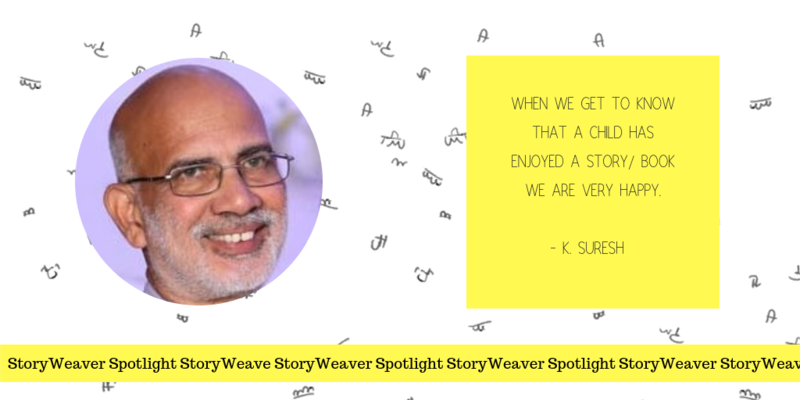
Q: What type of person do you think makes the best translator for children’s stories?
A person who loves books, likes children and respects them.
Q: Do you have any advice for anyone interested in becoming a translator?
A: The person should have good command over both the languages and should know the nuances. S/he should also know the cultural context and usage of idioms and phrases in both the languages. One should also read a lot.
The language for children should be simple. While translating one should use available vocabulary, though English words are commonly used. After completing the translation, give some gap and read it again without the source language text. Read it objectively, as if it was done by others and your job is to find errors in it.
Q: A book you'd like to recommend to other translators?
I suggest that the translators start with what they like and should feel that the children in the other language would miss a lot if that book isn’t translated. Obviously, I would suggest a book that I love very much.
Q: What is your personal relationship to language and/or translation?
I love to read books. I have started my work as a sub-editor in a Telugu newspaper, which involved translation and cultivated it over the years. I am not a creative writer, so I take pride in translation!
Q: When you’ve been given a story to translate, what’s your process, and how long does it generally take?
Sometimes I jump into translation. Sometimes, I read the entire story and sleep over it. While reading and in the free time, I think about the appropriate words and how it will be in Telugu.
Q: What do stories in translation bring to young readers?
It opens up their world! It introduces a new culture.
Q: You’ve translated stories for us. Which has been your favourite to work on?
I had the fortune of translating, reviewing and being a Guest Editor for Pratham Books. I liked translating The Cat in the Ghat!
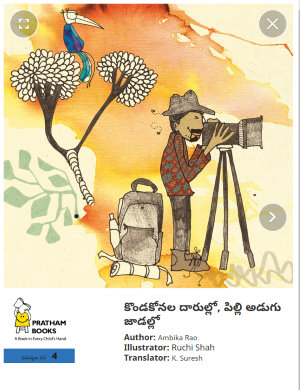
Q: What is the hardest thing about translating from English into Telugu? How do you navigate words or phrases that are tricky to translate?
The structure of English sentence is complex; it can take several adjectives and be very long. Breaking the sentences while translating sometimes results in losing the emphasis. The rhyming and punning with English words is difficult to translate. After the first translation, I explore simpler expressions and choice of vocabulary.
Q: How do you feel when your story reaches the child?
When we get to know that a child has enjoyed a story/ book we are very happy.
Q: Translating stories must have required research when it came to STEM related terms and concepts. How did you explore new objects and concepts?
For some words, I look up the dictionary. Sometimes re-writing helps. Constant reading will add to one’s vocabulary.
Q: How else do you think we can join hands to take more stories to more children in more languages?
Pratham Books and Tulika are doing excellent job in multi-language publications. StoryWeaver is providing a platform for exchange of books in various languages. Arvind Gupta is encouraging multi-language translations of children’s books and posting them on internet archive. Earlier there was considerable direct translation in regional languages, now English has become the connecting language. A publishers’ consortium for exchange of rights would be beneficial.
Q: As a publisher and translator what do you think is the best way to approach a child?
The general tendency is to preach to children, which I do not subscribe to. We expect lot from children without practising/ following them. The best way is to make a range of books available to children from which they can choose. We should not be overly worried about what they learn from a book. They will definitely learn from books and the society at large.
Be the first to comment.